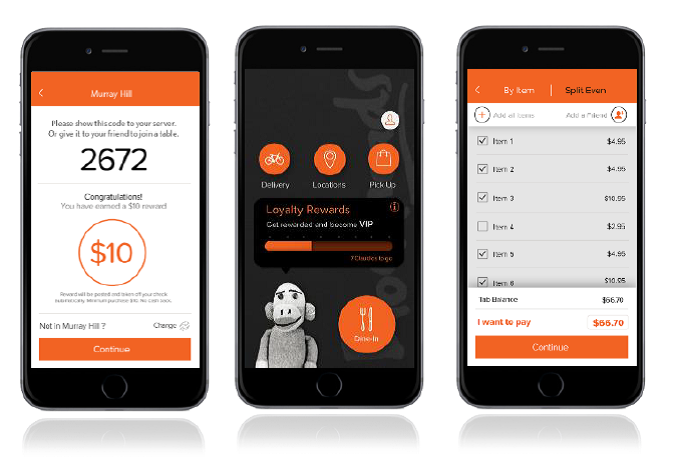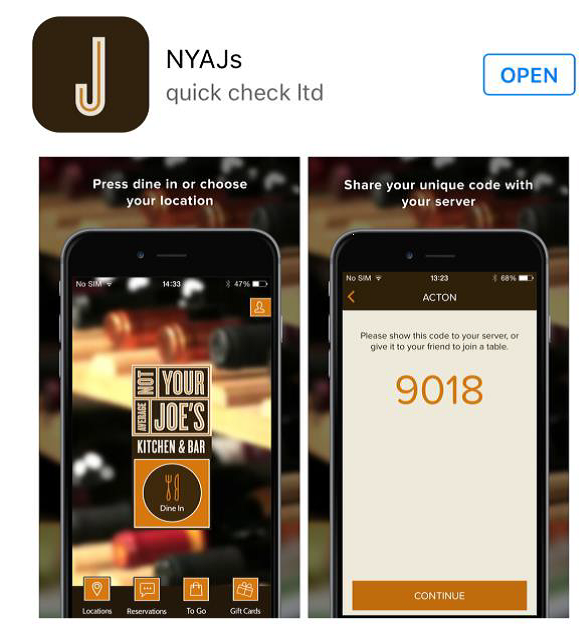Offering pick-up/delivery services and the ability to reorder table items via a mobile payment app is increasing revenues and the guest experience
By Cyndi Shepley
Are you ready for new customers in 2017? Restauranteurs in the fast-casual segment sure are. After a decade of fighting traffic declines, full-service casual-dining chains are discovering mobile payment apps to be the holy grail they have been searching for.
Rather than investing heavily in new menu items or giving the facility a complete facelift to get people through the doors, how about offering order-ahead and/or delivery service transacted through a mobile payment app instead. Whether customers drive up to pick up, or you deliver the food to them, either way, sales are going to rise. As long as the service is quick and orders are correct, those customers will come back again and again.
Consider this: Nation’s Restaurant News recently reported that Olive Garden is getting 11 percent of its sales from takeout orders, up 50 percent over the last three years; Bob Evans’ take-out same-store sales are up by 25.2 percent; Buffalo Wild Wings Inc. take-out is now 16 percent of sales at company-owned restaurants, and the company is now looking at delivery. This is proof that order-ahead and delivery services are impacting sales in a good way. While some of the largest brands in casual dining continue to struggle, Olive Garden’s same‐restaurant sales increased 3.1 percent throughout 2016, and The Cheesecake Factory has experienced 27 consecutive quarters of positive comparable sales (FSR magazine). Both of these companies offer a mobile payment app facilitating experience-based dining.
During the Fast Casual Executive Summit in October, Elizabeth Friend, Euromonitor International's senior food strategy analyst, said that restaurants must, "adapt to mobile commerce or die" (FastCasual.com). She said restaurants must “find a way to make your app make your customers happy."
In “Fast Casual Summit: 5 lessons learned from m-commerce innovators,” Christi Christian, marketing director at Urbane Cafe, said one of the quickest ways to delight customers is by helping them save time. The mobile payment app used by Urbane Café does just that; it reduces time spent waiting in line and streamlines order retrieval. Aaron Noveshen, founder and CEO of Starbird and the Culinary Edge, agreed, saying: “Again, it's all about the customer. Think about the customer first and what makes them whole, happy and excited. Use technology to help with that."
Mobile Commerce is M-M-Good Can adding an order-ahead and/or delivery service via a mobile payment app really be that easy? The answer is “Yes.” As long as the mobile payment app selected is seamlessly integrated with the restaurant’s point-of-sale system, it will drive quick returns. The right mobile payment app partner will give restaurant goers a single portal for ordering ahead or requesting delivery right from their smartphones, and it will give businesses a platform to track loyalty and offer rewards.

Dine-In is Delighting Guests Too While adding order-ahead and/or delivery is a smart way to drive sales, don’t abandon your efforts on those who prefer to dine-in. Mobile payment apps are key to a successful experienced-based dining program. Here’s how it works: Upon arrival at the restaurant, guests are given a unique 4-digit code which they share with their server. The server enters the code into the POS, and immediately the customer begins to receive rewards for using the app. With the app, customers can view the live bill, reorder items on the check, split checks among diners, tip their server, pay, and receive rewards for their patronage. Multiple methods of payment can be linked to an account so consumers can choose which payment method to use each time. Payment methods include credit card, debit card, Paypal, Android Pay, Apple Pay, MasterPass, Visa checkout and more.
Reorders = Revenues 
Study Substantiates Claims An October 2016 study conducted by the Cornell University Center for Hospitality Research reports that restaurant goers are embracing guest-facing technology, such as mobile apps and payment apps. In fact, 70 percent to 80 percent of restaurant patrons cited guest-facing technology and mobile apps as reasons for having a favorable experience. Why? Because they like having control over the payment process and they like interacting with technology during their meal.
The study focuses on table top technology influences in full-service restaurants. If you remove the cost of adding table-top or tablet hardware and software to each table and enable guests to use their own mobile devices to interact with the wait staff and manage their check – devices they are familiar with and are comfortable using – the findings will be even more favorable. Cornell researchers found that using guest-facing technologies in full-service restaurants results in faster table turns, labor savings, and higher guest checks through the sale of add-ons to the customers’ meals.
If you want further substantiation of these claims, just ask a restaurateur using the MyCheck app. Directly integrated to more than 30 major POS systems around the world, MyCheck customers are turning tables 6 to 10 minutes faster and earning staff 12% higher tips.
So, owners and operators of full-service, casual-dining restaurants looking for creative ways to increase revenues and regain lost business should implement a proven mobile payment app strategy. After all, people are comfortable using apps and smartphones, so getting customers and staff on board won’t be a challenge. And, with no hardware to install or maintain, restaurants can be up and running quickly.
Stop losing money by printing new menus . . . undergoing costly renovations . . . and implementing discounts that give away more money than you are taking in. The Internet of Things is changing the way the world is doing business. Isn’t it time you got on board?

